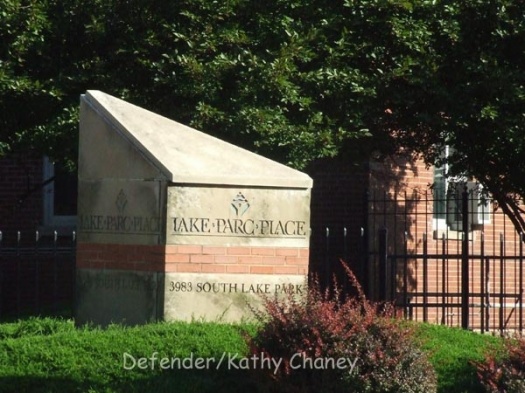
A recent community meeting held by the North Kenwood-Oakland Community Conservation Council revealed that the residential make-up scale wasn’t balanced at one of the Chicago Housing Authorities South Side developments, based on statistics given to current
A recent community meeting held by the North Kenwood-Oakland Community Conservation Council revealed that the residential make-up scale wasn’t balanced at one of the Chicago Housing Authorities South Side developments, based on statistics given to current CHA head Lewis Jordan.
Those statistics concerned Alderman Toni Preckwinkle (4th), whose ward houses Lake Parc Place, a two-building complex in the 3900 block of South Lake Park Avenue.
Funds obtained by the public housing agency, from the Department of Housing and Urban Development under former CHA head Vincent Lane in the early 1990s, was secured contingent upon a commitment by CHA that Lake Parc Place would be an equally distributed, mixed-income development, according to Preckwinkle.
“The money was from what was called a mixed-income, new communities program to renovate those buildings. The commitment with the legislation at the time is that there would be 50 percent working families and 50 percent CHA-eligible families,” Preckwinkle said.
The “working family” consists of a household with an adult earning between 50 and 80 percent of the Area Median Income. The AMI for the Chicagoland area is $71,600 for a family of four, according to HUD.
Referencing statistics cited at the meeting by Jordan, by way of the development’s property manager, the scale has tipped.
“It’s now 70 percent public housing and 30 percent working families. We’re hoping Mr. Jordan will do his best to bring that ratio back to some kind of balance. They got the funding in the first place because of the commitment by CHA,” Preckwinkle said, adding that the meeting was the first inclination she received that the numbers were not balanced.
An increase in rent drove several working families away from the complex. In the early 1990s, a one-bedroom apartment in the development averaged nearly $400. Now, the average is about $850.
There hasn’t been an influx of new working families to fill that void. Instead, many displaced residents from the nearby Ida B. Wells Homes made Lake Parc Place their residence, longtime resident Gladys McKinney said.
Jordan expressed at the meeting that CHA is working diligently to pull in more working families, but in the meantime, the bottom line is to keep the building near residential capacity.
Preckwinkle is expecting Jordan to delve further to find out how to get the numbers more level. She also did not elaborate on whether or not the housing authority would face sanctions if the scale does not eventually balance as a condition of the funding.
“He promised he’d come back with an update. We will then see where we are,” she said.
Copyright 2008 Chicago Defender. All rights reserved. This material may not be published, broadcast, rewritten, or redistributed.